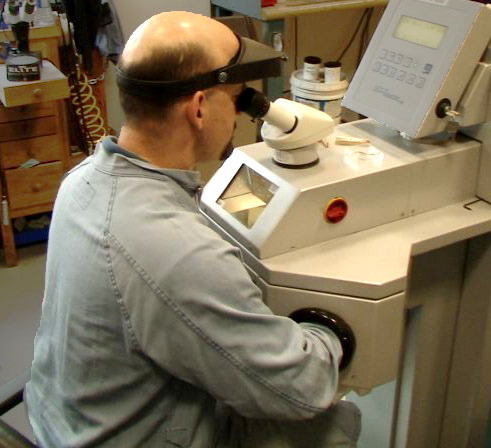 |
| Extremely constrained position (precision laser welder) |
The human body needs to move and be exercised and stretched. You should not conclude from phrases like “reduce force” and “minimize motions” that you’re best off just lying around pushing buttons. To be healthy, you need to stretch each joint to the full range of motion periodically throughout the day. Your heart rate needs to rise for a period of time every day. Your muscles need to be loaded on occasion.
Unfortunately, most jobs don’t promote these activities. Furthermore, where there is movement or exertion, it’s often too much of the wrong sort of thing.
Production issues
Staying in the same position for long periods is fatiguing, with a resulting drop in physical capacity and alertness. A good analogy is a long car ride. Even with the most comfortable seat in a luxury car, you become fatigued after several hours. Yet we design jobs that require people to sit for long periods (often on a less-than-comfortable seat) and we expect peak capacity at all times.
Employee well-being
Without proper movement, exercise, and fitness, we are at increased risk for a variety of health disorders, including long-term disorders like back injuries and cardiovascular disease. The fatigue and lethargy that results from being too sedentary is in itself a problem.
Strategies for improvement
Design for movement
Sit-stand
Adjustable equipment
Energy breaks
Warm-up
Fitness
Coaching
Design for movement
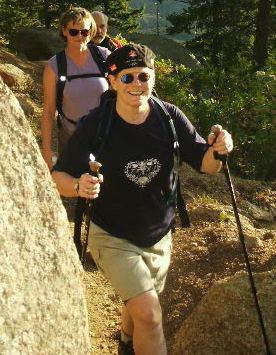 |
 |
| Possible for long periods | Difficult even for short periods |
Again, an analogy is helpful. It is possible to walk for hours — you may become tired, but it is possible. In contrast, it is difficult to stand rigidly still for even a few minutes.
Yet in both cases, you are on your feet. The difference is that when walking you alternate between different muscle groups, which provides them with continuing micro breaks. Furthermore, the movement promotes flow of blood and nutrients to the tissues. And in contrast, when standing still, the same muscles are loaded without any breaks, plus the continually tensed muscles restrict the flow of blood.
Design for sit-stand
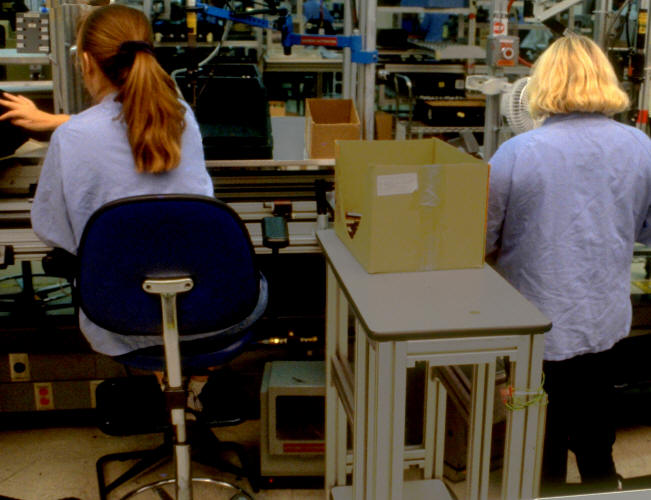 |
 |
| Provide for ability to change between sitting and standing | Sit-Stand: A tradition |
It is good to alternate back and forth between sitting and standing. The most basic approach is to design the workstation for a standing posture, then use a tall stool to sit on as needed. You stand until you get fatigued from standing, then sit, and vice versa. See Workstations: Sit-stand
Provide adjustable equipment
 |
| Change chair positions |
There is no one “correct” posture that is best for an entire workday. It’s important to be able to change and move. Adjustable furniture and equipment can facilitate such movement. Training and coaching is often necessary to help break old habits.
For those who sit for long periods, it is important to change the adjustments of the chair: shift, move, and change positions often. See Workstations: Seating.
Provide “Energy Breaks”
 |
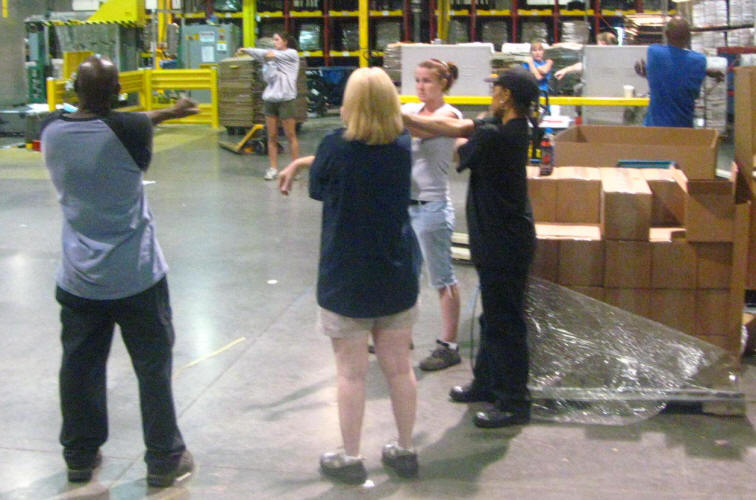 |
| Individual and group energy breaks | |
People doing sedentary tasks need to stop and stretch from time to time. The aerobic activity refreshes the body, improving both well-being and productivity. Group energy breaks have become fairly common in industry.
Warm up
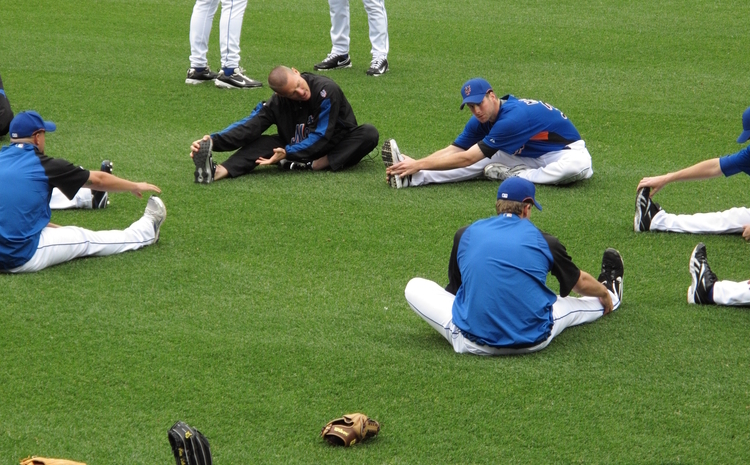 |
 |
| Professional athletes | Industrial “athlete” |
People who perform heavy tasks should warm up beforehand. Experience in sports has shown the value of warming up to prevent injuries. No professional athlete would start a game without a warm up; industrial “athletes” are no different.
Keep fit
Staying in shape is important. An increasing number of employers provide fitness centers and/or have other programs on site to help promote good fitness.
Coaching
 |
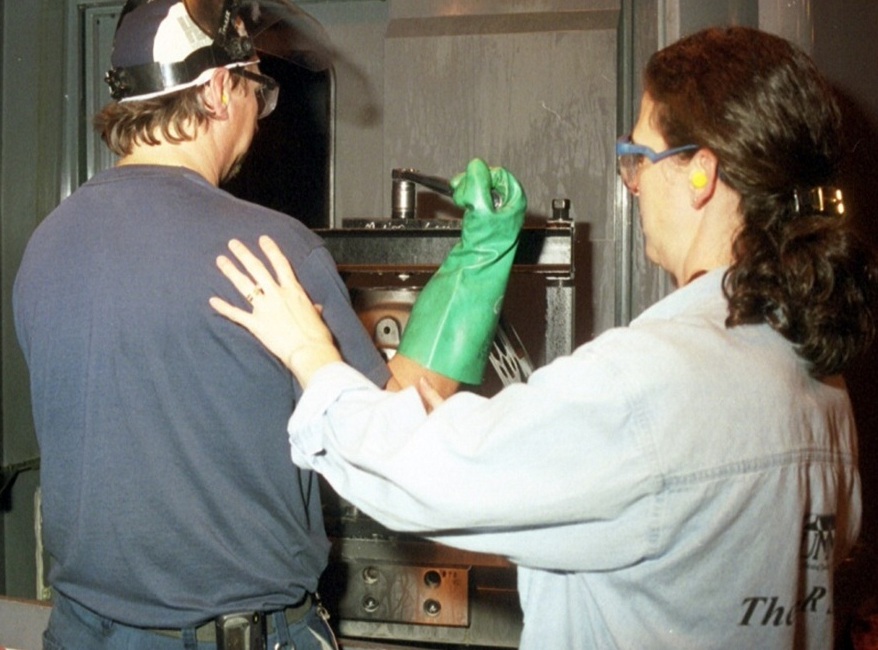 |
| Individual coaching | |
Many individuals may need special coaching to build up muscles for certain tasks or to use optimal work methods for those specific tasks. Results can yield benefits for reducing injuries and absenteeism along with better production.
